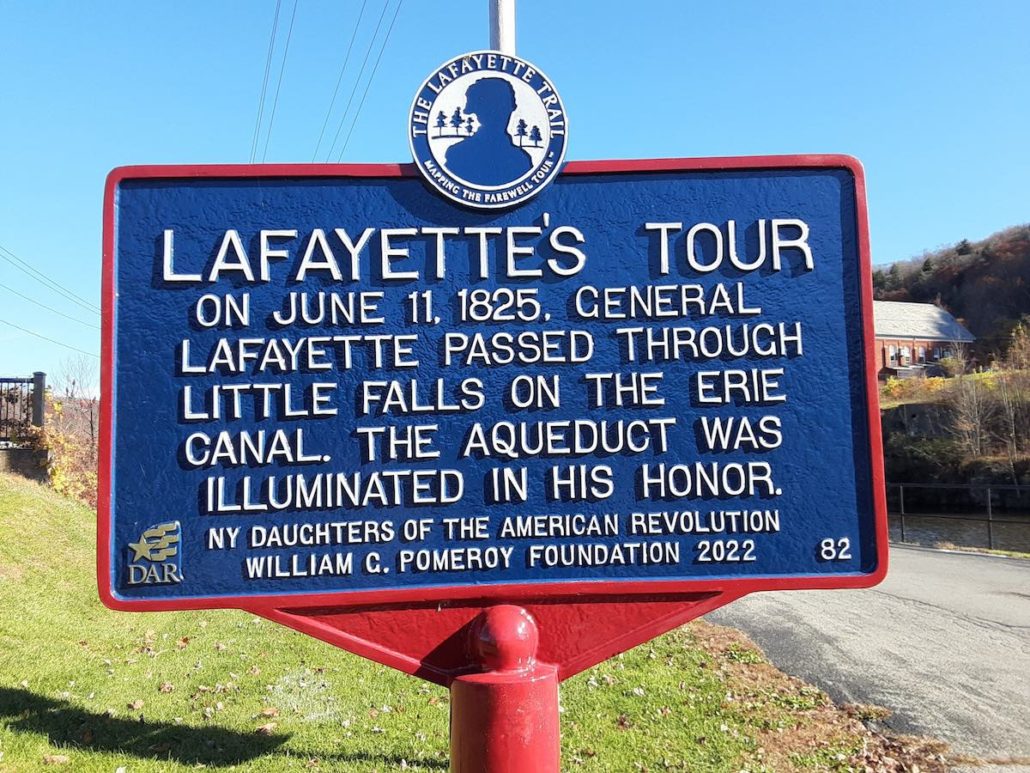On May 17, at 2 pm an official unveiling of the Lafayette marker by the canal will be held.
Project lead, Daughers of the American Revolution Vice President General, Patrice Bernier will be in attendance. Julien Icher of “follow the Frenchman” program will also be there, as well as Ciry Historian Patricia Stock.
Members of Little Falls Historical Society and area DAR chapters have been invited. LaFayette came through the city and stopped at Little Falls on the canal during his 1825 tour.
When America declared its independence on July 4, 1776, the thirteen colonies were pulled into a conflict with one of the world’s most formidable powers, Great Britain. The colonies’ actions against Great Britain inspired a young French aristocrat and military officer, Marquis de Lafayette, to depart his native France to fight in the American Revolution. Lafayette served as a commander with the Continental Army throughout the war and helped secure French support for the American cause. This support played an integral part in securing American victory during the war.
Celebrated as a hero in the U.S. and France, Lafayette eventually returned to his home country. In 1824 Marquis de Lafayette was invited to visit the United States for the first time in 41 years. As an American hero and one of the only surviving commanders from the Revolution, Lafayette’s visit to the U.S. was highly anticipated and met with a great deal of enthusiasm and excitement. Lafayette’s Tour extended from 1824 to 1825. During this time he visited Washington D.C., as well as major cities and small communities across 24 states.
On June 11, 1825, General Lafayette stopped in Little Falls on his way east along the Erie Canal. The June 14, 1825 edition of the Albany Argus mentions the event:
“At the Little Falls the citizens were assembled in the evening to receive him, the Aqueduct was illuminated, and beacons were burning on the summits of the high surrounding precipices. From that place to Schenectady, during all the following day, the borders of the canal were alive with citizens, and at every lock he received their congratulations on the deck of the boat.” – The Pomeroy Foundation



